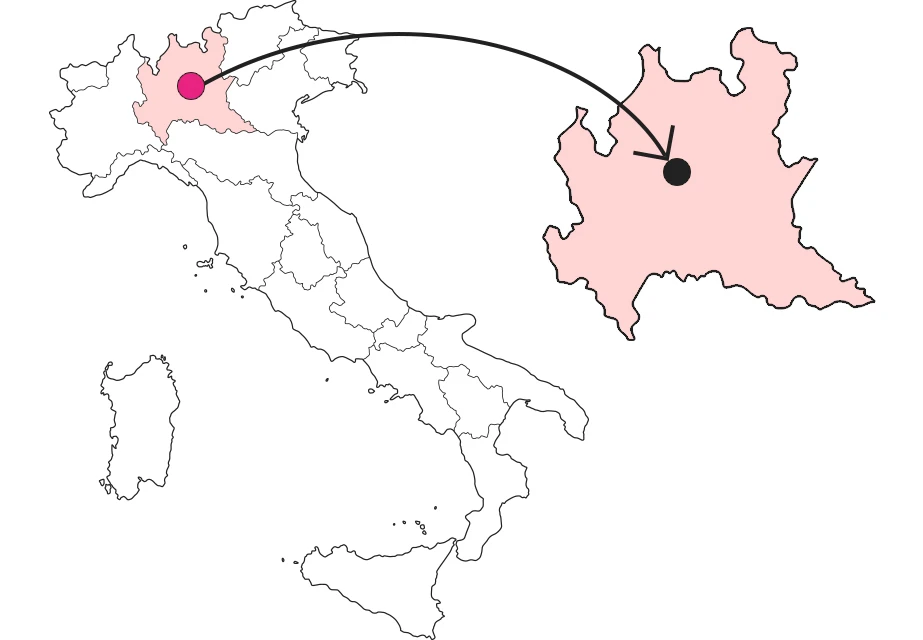


















Church of San Bernardino, a rediscovered masterpiece
Gothic and austere the exterior, splendid and Renaissance the interior

Where

Just outside the village of Caravaggio stands the church of San Bernardino with the adjoining convent. Behind the slender porch (added in the 18th century) we recognize the typical Gothic-Lombard structure of Franciscan churches: exposed brick, gabled façade (here asymmetrical due to the addition of chapels on one side), rose window, terracotta hanging arches, arched entrance with banded decoration. The lunette above the entrance houses a 16th-century fresco of the Adoration of the Magi. But before entering, it's worth making the rounds around the church to admire the convent complex, surrounded by greenery and expertly restored, and to enter the very graceful porticoed cloister.
Why it's special: the Crucifixion
But it is the interior that strikes the visitor who, once he crosses the threshold, is astonished at the splendid fresco of the Crucifixion that dominates the space of the entire nave, nine meters by seven. It is the work of Fermo Stella, a Caravaggio painter. On the partition that divides the church into two parts, the one reserved for the faithful and the one reserved for the monks, Christ on the Cross between the two thieves stands out in the center; on the sides, the Passion narrative in four scenes: the Last Supper, Jesus before Pilate, the Capture of Jesus and the Resurrection.
Not to be missed: the coffered ceiling.
When you manage to take your eyes off that marvel, it is worth taking them up to look at the splendid coffered ceiling, a 17th-century work, which is connected to the walls with a beautiful frieze of vases and festoons. The side chapels are also worth a look, and before leaving, one cannot fail to glance at the very sweet Madonna di Fermo Stella, depicted between Saints Bernardino and Rocco.
A bit of history
The church and convent were built between 1472 and 1489 on land donated to the Friars Minor of San Bernardino. The frescoes by Fermo Stella, however, are dated 1531. The convent suffered the fate of many Italian convents: the Napoleonic suppression and its use for other purposes as a farmhouse and barracks. It was later donated to the municipality, which oversaw its restoration.
Curiosity: why San Bernardino
The reason for the dedication to San Bernardino is curious. Rivalry between municipalities has always been a tradition in Italy, but the one between Caravaggio and Treviglio, fueled by economic and border issues, had degenerated to the point that disputes, murders and feuds made life impossible. Finally St. Bernardine of Siena, an itinerant friar who preached concord and love, arrived in the area. His preaching succeeded in convincing even the most unruly. In memory of that visit, both municipalities dedicated a church to the saint. The symbol of St. Bernadine, the monogram IHS in Gothic characters set in a sun, can be seen on the outside of the church, above the rose window.
Enter the Map of Italy's Undiscovered Wonders and find treasures where you least expect it... Inspire, Recommend, Share...
Contacts
The Map thanks:
In the Community
Enter the Map of Italy's Undiscovered Wonders and find treasures where you least expect it... Inspire, Recommend, Share...
Where

Contacts

